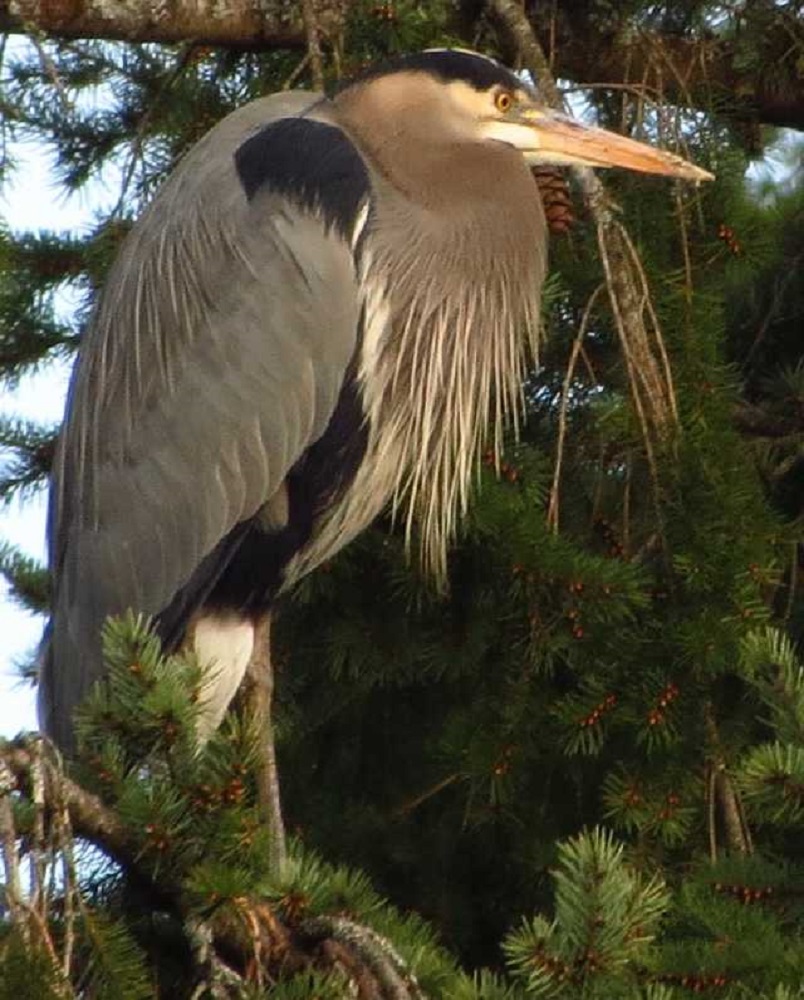The Great Blue Heron resides along lakes, ponds, rivers, and marshes from coastal B.C. all the way to Mexico.
This adaptable bird’s large size enables it to prey on a variety of animals including fish, mice, small birds, and insects. This wide variety of feed enables the heron to stay farther north during the winter months, longer than other species. When foraging, they will stand silently along coastal beaches, riverbanks, lake shores, or in wet meadows, waiting for prey to come by, which they then strike with their bills. Sometimes they get more than they bargained for and struggle to swallow their catch, watch the video to see more of this.

They will also stalk prey slowly and deliberately. Although they hunt predominantly by day, they may also be active at night. They are solitary or small-group foragers, but they nest in colonies. Males typically choose shoreline areas for foraging, and females and juveniles forage in more upland areas.
Great Blue Herons usually breed in colonies containing a few up to 100 or more pairs. Nest building begins in February when a male chooses a nesting territory, puts on a display, and attracts a female. The nest is usually situated high up in a tree.
The male gathers sticks for the female who then fashions them into a platform nest lined with small twigs, bark strips, and conifer needles. Both parents incubate the eggs (up to 5 of them) for up to 29 days. Both parents feed the young by regurgitating food for them. The young can first fly at about 60 days of age, although they are still fed by the adults for another few weeks. Pair bonds only last for the nesting season, and adults form new bonds each year.

The young herons disperse in the late summer and can be found in small ponds, in mountain waters, or wherever there is fish. We have a great abundance of these birds here on the Southern Coast.